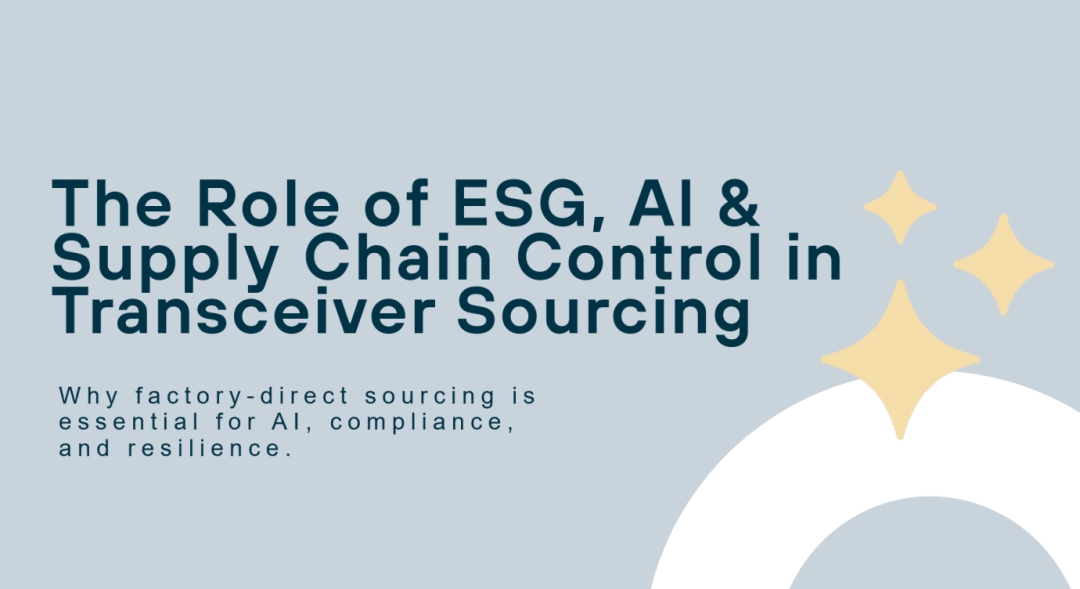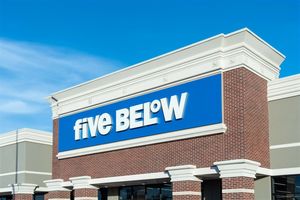As data-center flows grow ever more demanding, driven by AI, sustainability mandates, and global expansion, every link in your network backbone matters. Optical transceivers, though small and often overlooked, play a pivotal role. Choosing where and how you source them can make or break your infrastructure’s performance, transparency, and resiliency.
The old model, buying optics based on price or OEM branding, doesn’t hold up in this evolving landscape. Here’s how three major macro trends are reshaping transceiver sourcing, and what decision-makers should know when evaluating vendors.
AI‑Driven Growth = Higher Optical Standards
East‑West traffic at scale : AI training and inference workloads flood data center fabrics with massive, bidirectional data flows, making even nanosecond delays and dropped packets visible.
Firmware fragility : Frequent firmware updates in OEM switches can unexpectedly blacklist uncertified SFPs or QSFPs, causing silent failures.
Performance consistency matters : In AI environments, you need optics that handle peak load every single time, no batch surprises, no mismatches.
What to check for in optics suppliers :
Tested compatibility across AI-grade platforms (Cisco Nexus, Juniper PTX, etc.) • Firmware re-validation on updates, not just initial certification• High-temperature profiling and signal-integrity testing
ESG & Regulatory Accountability
Supply-chain transparency is no longer optional : Organizations now track emissions, sourcing, and material origins, with optics components falling under scrutiny.
Certifications matter : Yes, many optics claim RoHS or TAA compliance, but without serialized traceability, meeting audit standards is nearly impossible.
Risk of recalls : Without full visibility, addressing product recalls or material concerns can be nearly impossible or very costly.
What to demand from suppliers :
Serialized units linked to manufacturing reports
Certificates for materials, emissions, conflict minerals, and compliance standards
Detailed origin data (for example, by fab location or raw materials batch)
Supply‑Chain Resilience Through Control

Single-sourcing is risky: Private-label optics vendors often source from a mix of anonymous factories, and you never know where your next batch will come from.
Lead-time disruptions are real: In a single-source model, factory shutdowns, capacity constraints, or global logistics issues can suddenly stall procurement.
Scaling with agility is now essential: Hyperscale infrastructure needs optics at speed and scale, with no surprises or quality hot zones.
What to look for in manufacturing partners :
Multiple production sites for failover and load sharing
In-house component stocking and JEDEC-grade management
Inventory buffers and proactive capacity planning
What’s Next in Optical Manufacturing?
A few emerging trends signal where optics sourcing must evolve:
- Smart optics with embedded telemetry and AI-based analytics
- Dynamic firmware tuning, where optics adapt based on network or environmental conditions
- Lifecycle tracking, enabling optics to report full health histories and decommission gracefully
- Localized or even on-prem edge production, for sensitive or secure deployments
Future vendors will need factory expertise, digital processing control, and sustainability-first operations to deliver these capabilities.
Media Contact
Company Name: ATOP
Email: Send Email
Country: China
Website: https://www.atoptechnology.com/






